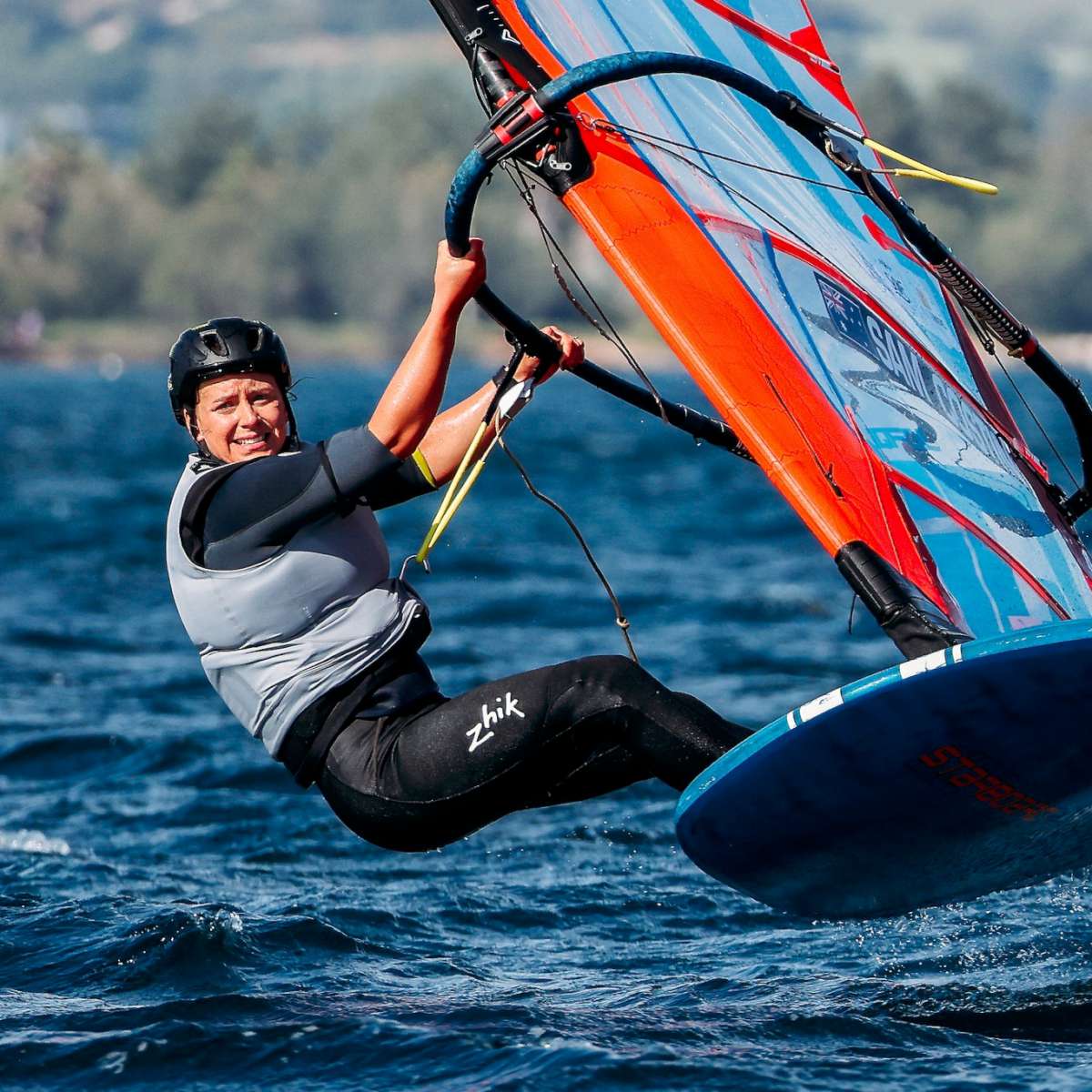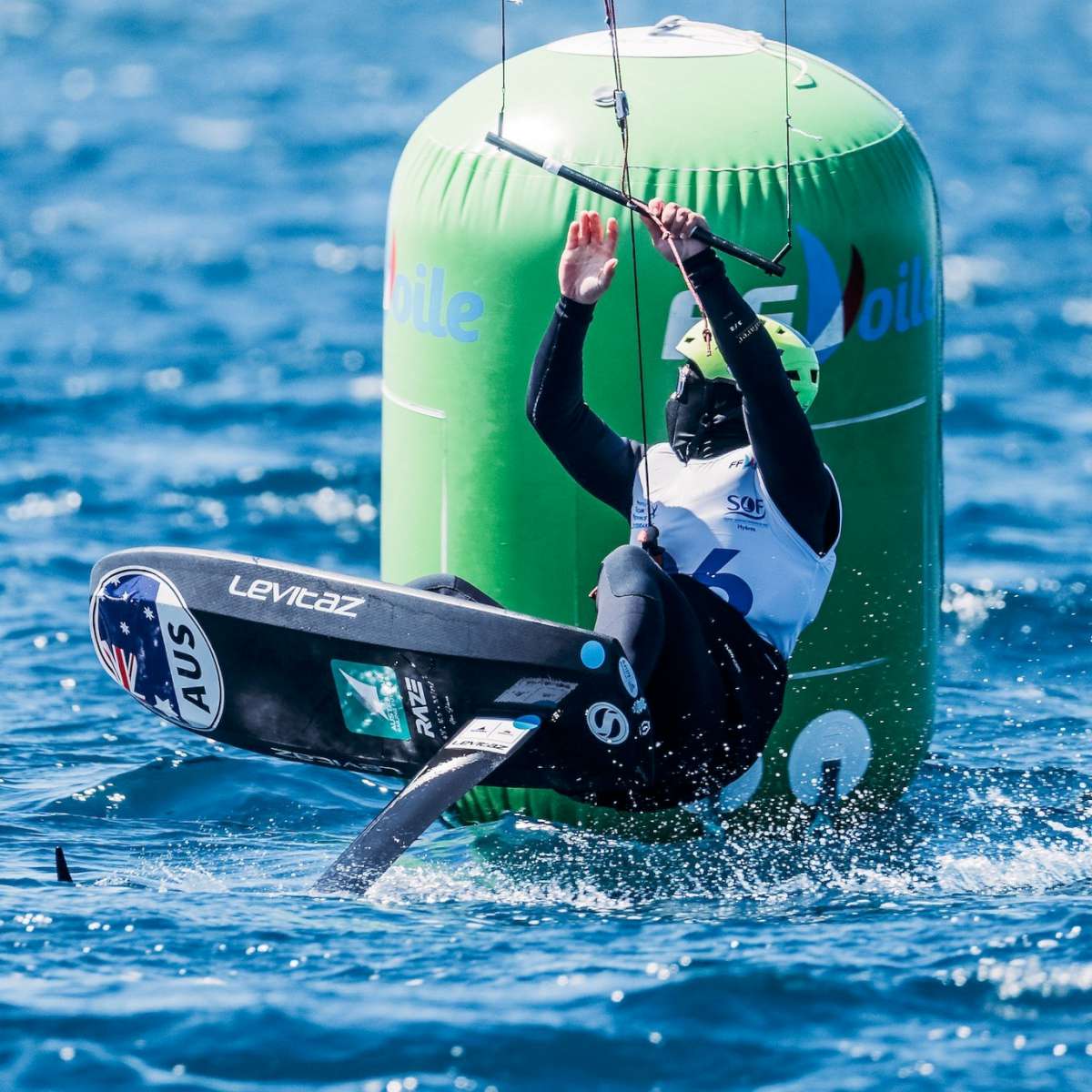“Second only to the immortal Chris Webb”
William J. ‘Billo’ Hayward was not only one of the great champion 18 footer skippers at the NSW (now Australian) 18 Footers League during the 1930s and 1940s, he was also one of the greatest 16 footer sailors at St George Sailing Club (StGSC) for more than thirty years.
‘Billo’ was already an established 16 footer champion at StGSC when he first sailed an 18, named All British, at the League in January 1936.
During a 12-year career at the League, ‘Billo’ won the 1948 World Championship, the 1937-38 Australian Championship and five NSW championships – 1936-37, 1938-39, 1941-42, 1943-44 and 1945-46, as well as another nine lesser championships.
He was not only rated as one of the best skippers in the 18s at the time, he was considered to be second only to the immortal Chris Webb.
Incredibly, throughout his 12-year career with the League, ‘Billo’ raced an 18 each Sunday while he continued with his 16 footers on Saturdays. It had little effect on his ability as the champion skipper regularly won championships in both classes.
‘Billo’ left school when he was only nine-years-old and became a professional fisherman on the Georges River by the following year, and it’s believed that the knowledge of tides, winds and currents that he brought with him to his sailing career played a big part of his success.
He purchased his first 16ft skiff, named Thrush, and sailed the 1917-18 season, and it wasn’t long before he won the St George Sailing Club Championship (1921-22 and 1922-23) in a new skiff, named St George.
In his long career at StGSC, where he sailed mainly 16 footers, ‘Billo’ proved his brilliant ability by winning seventeen club championships spread over thirty four years.
The Hayward family had a successful oyster farming business which took ‘Billo’ away from the Botany Bay area from 1925 to near the end of the 1930 season.
He bought a new 16, named Nereid, for the 1931-32 season and had immediate success when he won the NSW Championship. It was the beginning of an incredible career which lasted to the late 1950s at StGSC.
When the 18 footers League began to race each Sunday on Sydney Harbour, on 3 February 1935, it attracted large crowds, big fleets and bookmakers betting on the races which were widely publicised by the local sporting press, and new skippers were immediately attracted to the fleet.
‘Billo’ first raced an 18 footer on 27 January 1936 when he skippered All British and finished in fourth place. By February, he amazed spectators when he led at every rounding mark to score a 19s win.
Malvina
In 1937-38 season he sailed a new 18, named Malvina, and became the first NSW skipper in 39 years to win the Australian Championship on the Brisbane River, and he did it against Aberdare, which was the defending champion and winner of the previous four Australian championships.
Reports claimed that Hayward outsailed and out manoeuvred the locals on unfamiliar waters which had swirling tides and a maze of sand banks, and won the three-race championship with first, second and fifth placings.
He soon achieved a star rating on Sydney Harbour and changed skiffs regularly as owners sought his talent to skipper their skiffs. He was what we’d call a ‘gun-for-hire’.
After leaving Malvina, he won four races from six starts in a previously disappointing skiff, named Lightning, which led Lightning’s owner Stan Sheldon to claim, ‘Billo’ could “rig a blanket on a tomato case and still win races.”
Previous skippers of Lightning had condemned her sails but Hayward said “to get the best out of the boat, one must rig the sails properly. If they aren’t put on the spars correctly they pull out of shape and lose their drive.”
“The big sail on Lightning is stretched a bit but we’re rigging it so that it will come back into shape.”
Hayward was a very modest individual and attributed his amazing success to his crew. “Everything depends on them. I have had the same crew for years, they are a good combination. They work well together to keep their boat moving at her fastest.”
He believed that rigging and skippering weren’t as important as the balance of the boat.
On Saturdays, Hayward was winning 16ft skiff races with his boat, named Nereis, and for three consecutive weekends, won a 16 footer race on Saturday and an 18 footer race on Sunday.
Malvina’s builder, Charlie Crowley, built a new 18, named St George, for ‘Billo’ Hayward’s 1938-39 season and she was one of three League boats which contested the world 18 footer championship on Waitemata Harbour, Auckland in 1939. St George had a best result of a second placing in Race 2.
‘Billo’ sailed an 18, named Dee Why, in both the 1939-40 and 1940-41 Australian championships before the event went into recess during WW2.
Swansea
In 1942-43, Lester Woodforth, designed and built Swansea, which was said to have “an unorthodox design” and suffered wisecracks about transgressing all proportions of an 18 footer, although still conforming to regulations. “She was wider in the shoulder and narrower at the stern than usual”
When ‘Billo’ rigged her for her first race he said, “This is a boat and a half” then took her out and won first time.
When she began racing in the 1942-43 season she lived up to expectations and at one point during the season had forced every other boat in the League’s fleet to the 5min limit mark yet still won 13 races from 23 starts. She won all three heats of the NSW Championship and won the other four scratch races during the season.
By the end of that season, Swansea was described as “the greatest 18 footer of all time, and her skipper, one of the most skilful skippers to sail an 18 footer.”
Regardless of the sport or the decade in which it occurs, the key to success of a true champion is preparation.
Racing in Sydney, particularly on Botany Bay, came naturally to ‘Billo’ Hayward, but during the 1938-39 season it was reported in the media that a great win in Brisbane followed Hayward spending days before the Australian Championship studying the tidal vagaries of the winding course.
1948 World Championship
Prior to the 1948 World 18 footer Championship in Auckland, New Zealand, Hayward and his crew were back in the 16 footers on Botany Bay after twelve years divided each weekend between the 18s and the 16s. His team had just contested the Australian 16 footer Championship in Perth, WA.
Just days before the Worlds, Len Cantwell, the owner of the 18 footer named Crows Nest, asked ‘Billo’ to sail the boat following advice from the boat’s usual skipper, George Pearce, who then offered to work the mainsheet.
One reason for the change, aside from Hayward’s obvious talent, was the fact that he had previous experience sailing on Auckland’s Waitemata Harbour, when he skippered St George in the 1939 World Championship.
It was reported at the time that the League was determined to send the strongest team possible and recruited the 56 years old ‘Billo’ to sail Crows Nest.
He steered Crows Nest brilliantly to win the first two heats and the title.
Why was ‘Billo’ Hayward such a great champion?
Regardless of the sport or the decade in which it occurs, one of the critical keys to success of a true champion is preparation. That’s one of the reasons why ‘Billo’ was such a great champion.
The Australian 18 Footers League’s 2024-25 season will commence early in October, however you can catch the video coverage of all the racing action from the Winnings 2024 JJ Giltinan Championship as well as the club’s racing throughout the entire 2023-24 season on: https://18footers.com/18-footer-racing/18-footers-tv/
(this article would not have been possible without the information provided in the publication, 125 years A history of the St George Sailing Club, by Dr Garry Darby & Wayne Pascoe, and images from the John Steamer Stanley OAM collection)
Frank Quealey
Australian 18 Footers League Ltd.
Facebook: @18footers
Instagram: @18skiff





































